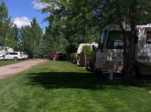Doctor Game: Low-intensity laser therapy for bruised brains
By Medicine Hat News on December 10, 2018.
How far have we come since Egyptians drilled holes in the skull in an attempt to cure a variety of diseases? We’ve seen tremendous advances in brain surgery. But relatively little progress in how to treat concussion. Basically, medical advice has been to rest while waiting for the brain to recover. But research now shows Low-intensity laser therapy (LILT) can dramatically speed up the healing of bruised brains. So why isn’t it used more by doctors, and for more conditions? To learn about this therapy I interviewed Dr. Fred Kahn, founder of Meditech International. Last year his Toronto clinic treated more than 800 concussion patients, those who have been in a car accident, suffered a fall, or who years ago had a blow to the head. Some had not lost consciousness, so failed to realize they’d suffered a concussion. The symptoms of concussion depend on the degree of brain injury. But the usual symptoms consist of memory loss, dizziness, headache, fatigue, irritability, emotional instability. So what is LILT? During this treatment, particles of energy, known as photons, are produced and absorbed by cellular structures. This stimulates metabolism in damaged tissues, resolves inflammation, accelerates healing, which results in the elimination of symptoms. I spent several hours studying Dr. Kahn’s reports. One patient writes, “I had suffered concussion resulting in a stiff neck, brain fog, intense fatigue, and severe sensitivity to light and noise. It was quite demoralizing. I was treated by Dr. Kahn twice a week for 10 weeks, gradually regained my strength and emotional health.” Another patient says, “Following a car accident, an emergency doctor diagnosed a concussion. But he informed me there was no treatment to prescribe for recovery. Fortunately a friend told me about Dr. Kahn’s clinic and now, following several treatments, I’ve finally experienced positive changes in my mood along with reduced pain.” The World Health Organization reports that six out of every 1,000 individuals has sustained some form of concussion. And that 20 to 30 million North Americans are living with traumatic brain injuries. What impressed me during my stay at the clinic was how this therapy is also being used for so many other medical conditions. For years I’ve written how diabetes may result in hardened arteries, and decreased blood flow to the legs, resulting in diabetic ulcers and sometimes leg amputation. Now I saw patients whose leg ulcers had completely healed after 10 treatments over a two-week period, along with improved blood circulation to the foot. Laser therapy is also being used at the clinic to treat sports injuries, degenerative arthritis, back pain due to a ruptured spinal disc, carpal tunnel syndrome, rotator cuff tears, bursitis and chronic skin diseases such as eczema and psoriasis. Low Intensity Laser Therapy has been known for 40 years, but has largely been collecting dust. I first became aware of this therapy when I attended an International Conference on this subject several years ago. At that time, I heard Dr. Mary Dyson of the Department of Physiology at the University of London, England, discuss the healing properties of LILT. Another speaker, Tina Karu, Professor of Laser Biology at the Russian Academy of Science, had done extensive research on laser therapy. It was apparent LILT was not an old-fashioned snake oil cure. Since that time, during a trip to Israel, I interviewed Dr. Simonn Rochkind, a micro-neurosurgeon at Tel-Aviv University, a world authority on nerve regeneration. People who have catastrophic spinal cord injuries, such as the one suffered by Christopher Reeve of the Superman movies, can never walk again. But I witnessed rats with severed spinal cords who were partially walking again with the help of Rochkind’s surgery in conjunction with LILT therapy. Current research shows that Low Intensity Laser Therapy is a new way to treat concussion but has received little medical attention. It also has the appeal of being non-toxic, non-invasive and is completely safe. So today with the increasing number of concussions, there is no need to drill holes in the skull or wait for nature to heal a bruised brain. Low-intensity laser therapy offers a safe and speedier route. For more information see the website http://www.docgiff.com For comments info@docgiff.com 16-15



